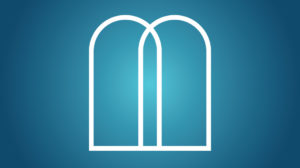The Source of Existence

All is not well in the Midbar. There’s turmoil in the camp, rebellion in the air. Korach and his followers are questioning Moshe’s appointment of several individuals to positions of authority,
Moshe, the finest advocate Klal Yisrael ever had, the leader who spent 40 days and nights without food or drink in supplication on behalf of his people, seems to abandon his defending role as he calls for a punishment both swift and spectacular (Bamidbar 16:28–30): “By this you will know that Hashem sent me to do all these acts; it didn’t come from my heart. If these people [Korach and his followers] die the death of all men, then Hashem has not sent me. But if Hashem produces a new creation and the earth opens its mouth and swallows them and all that is theirs, and they go down alive into the grave, then you will know that these men have rebelled against Hashem!”
Why this horrific proposal? Why doesn’t Moshe ask Hashem for erech apayim, an extension of time, as he did on other occasions of offense in the camp? Was Korach’s sin so grave that he couldn’t be granted the opportunity to repent before facing Hashem’s wrath?
The proposed punishment is also unprecedented. No mere plague fell Korach and company. Pirkei Avos tells us that the extraordinary “mouth of the earth” was created during the first week of Creation. As the Malbim describes, the earth turned into a grotesque and avaricious creature, opening its mouth and then closing it, swallowing the sinners, and leaving behind not even their smallest possession. “And all of Yisrael who were around them fled at the sound, saying, ‘Lest the earth swallow us.’ ”
Undermining the Foundation
History is replete with movements, feuds, and uprisings waged by subordinates who resented their leader’s authority. Yet Korach’s uprising was much more serious than, and reverberated far beyond, the typical campaign of an aggrieved individual.
The eighth principle of the Rambam’s Principles of Faith is commonly referred to as Torah min hashamayim, the belief that the Torah is of Divine origin: “I believe with complete faith that the entire Torah that is in our possession is the same one that was given to Moshe Rabbeinu.” This principle actually contains two elements: the fact that Hashem gave us the Torah through Moshe, and the fact that the Torah we have today is this very same Torah.
As the Rambam explains in detail, Hashem dictated the entire Torah to Moshe Rabbeinu, who then transmitted it to us. Our Sages describe Moshe as “sofer hama’atik mi’sefer kadmon — a scribe copying an existing document,” for he recorded it precisely as he heard it, word for word. The Rambam labels as a heretic one who claims that the entire Torah was written by Hashem except for one verse, which he believes was authored by Moshe.
Since every word in the Torah was written by Hashem, there is no pasuk that’s irrelevant or trivial. As the Rambam puts it, there’s no difference, in holiness and veracity, between the words, “Shema Yisrael Hashem Elokeinu Hashem echad” and “the sons of Cham were Cush, Mitzrayim…” Even verses that seem unimportant will reveal insights and wonders to the talmid chacham who can decipher them, for the Torah’s wisdom is unfathomable. For this reason, a sefer Torah that’s missing one letter is not “almost perfect.” It is considered passul, unfit for use, until it’s repaired.
Oops! We could not locate your form.










